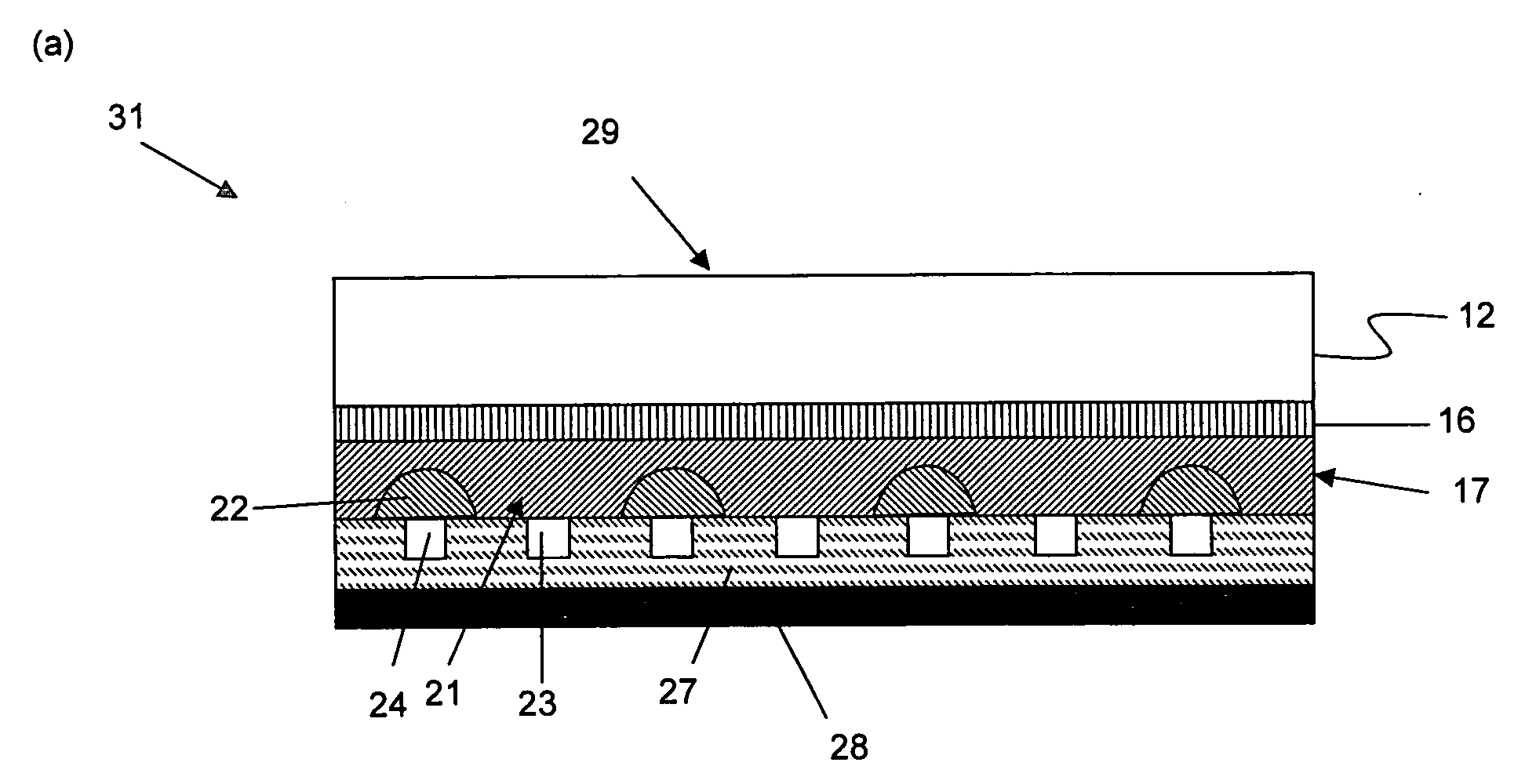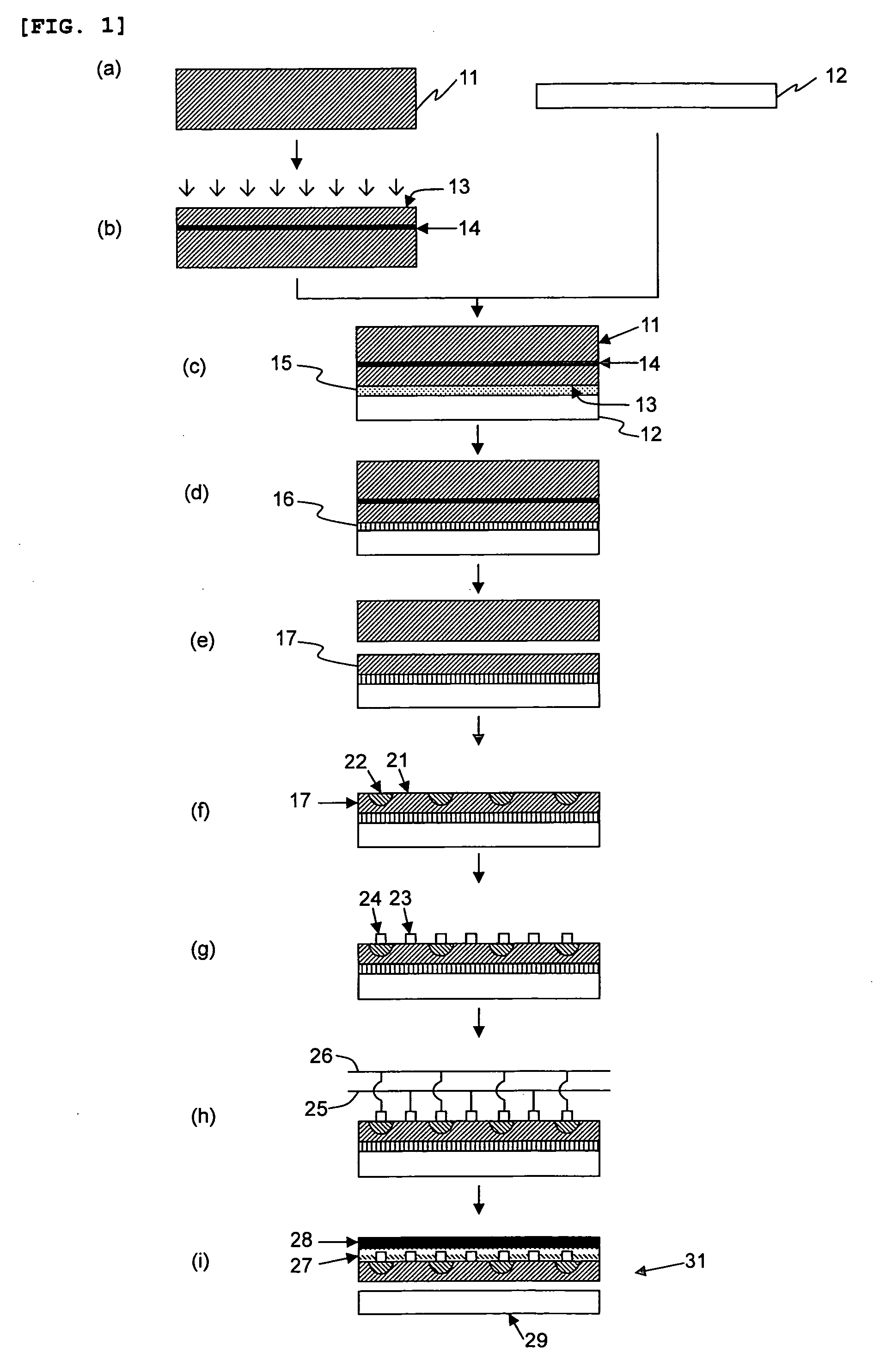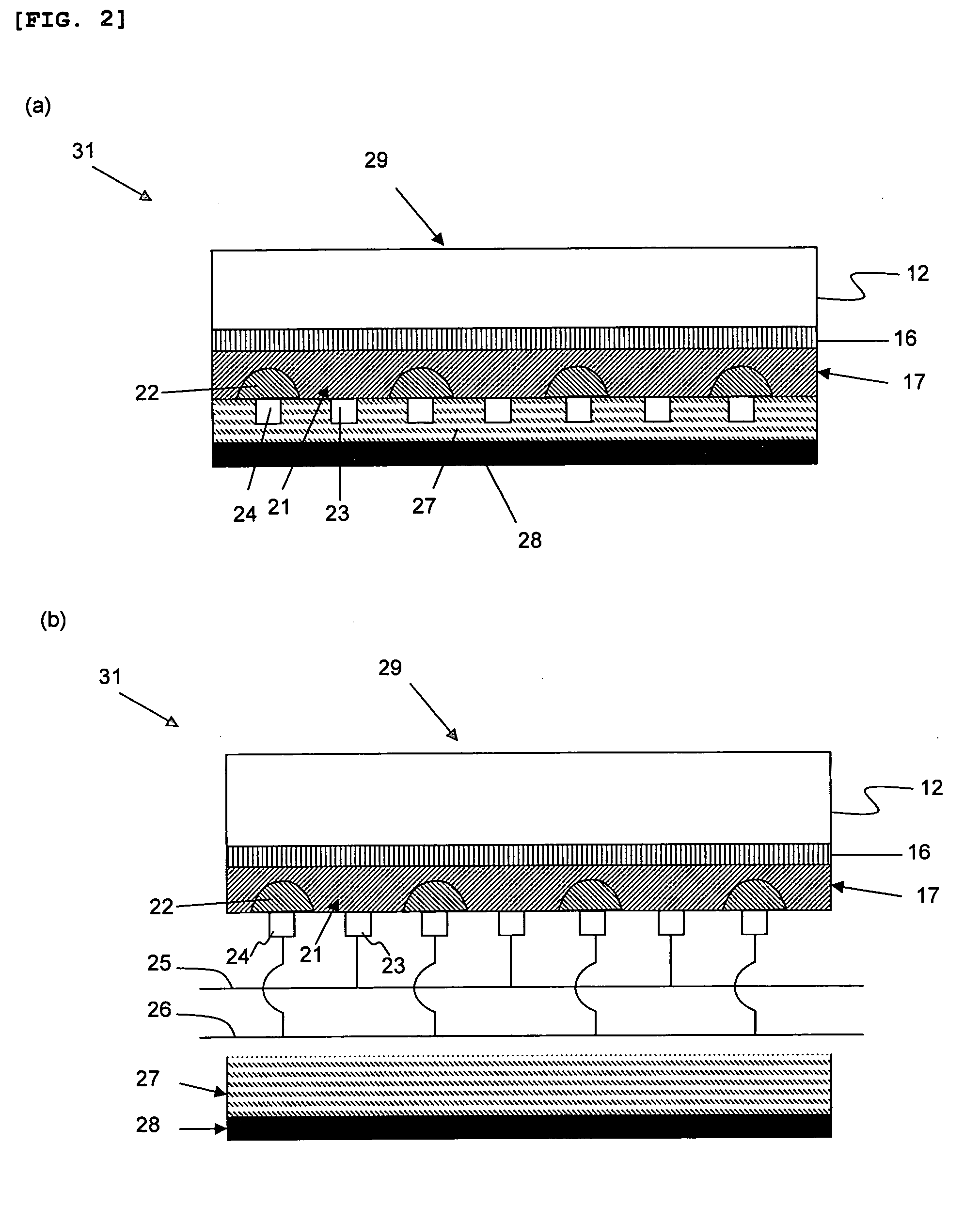Method for manufacturing single crystal silicon solar cell and single crystal silicon solar cell
- Summary
- Abstract
- Description
- Claims
- Application Information
AI Technical Summary
Benefits of technology
Problems solved by technology
Method used
Image
Examples
example 1
[0098]A single crystal silicon substrate with a diameter of 200 mm (8 inches), the crystal plane (100), the p-type conductivity, and a surface resistance of 15 Ωcm was prepared as a single crystal silicon substrate 11. A quartz glass substrate with a diameter of 200 mm (8 inches) and a thickness of 2.5 mm was also prepared as a transparent insulator substrate 12 (Step a).
[0099]H+ ions were then implanted into one main surface of the single crystal silicon substrate 11 at a dose of 1.0×1017 / cm2 and at an energy level of 350 keV (Step b). An ion-implanted layer 14 was thus formed at a depth of about 3 μm from the ion-implanted surface 13.
[0100]A polycondensate was obtained by hydrolysis and polycondensation of an alkyltrialkoxysilane and a tetraalkoxysilane using hydrochloric acid as a catalyst. The product was dissolved in isopropyl alcohol solvent to give a transparent adhesive (silicone resin). The single crystal silicon 11 and the quartz glass substrate 12 were brought in close co...
example 2
[0110]A light-scattering layer was additionally formed on a light-receiving surface 29 of a quartz glass substrate 12 of a single crystal silicon solar cell as fabricated in Example 1, as follows. A polycondensate resin which was obtained by hydrolysis and polycondensation of an alkyltrialkoxysilane and a tetraalkoxysilane using hydrochloric acid as a catalyst, and which contained 60% by weight of zirconium oxide particles with an average particle size of 0.3 μm and a refractive index of 2.4, was dissolved in isopropyl alcohol solvent to form a transparent resin material. The transparent resin material was then applied onto the quartz glass substrate 12 to a thickness of 2 μm.
[0111]The single crystal silicon solar cell thus having a light-scattering capability on the light-receiving surface 29 of the quartz glass substrate 12 was measured for conversion efficiency in the same manner as in Example 1. As a result, the conversion efficiency was 15% without any change over time.
[0112]Ow...
example 3
[0113]A thin-film single crystal silicon solar cell 31 was fabricated in the same manner as in Example 1, except that a quartz glass substrate 12 in which both surfaces have irregularities with a size of about 0.1 μm was used.
[0114]The single crystal silicon solar cell thus having a light-scattering capability on the interface of the quartz glass substrate 12 with the transparent adhesive layer 16 was measured for conversion efficiency in the same manner as in Example 1. As a result, the conversion efficiency was 16% without any change over time.
[0115]Owing to a further improvement in the optical-confinement structure, the conversion efficiency became higher than that of Example 1.
PUM
 Login to View More
Login to View More Abstract
Description
Claims
Application Information
 Login to View More
Login to View More - R&D
- Intellectual Property
- Life Sciences
- Materials
- Tech Scout
- Unparalleled Data Quality
- Higher Quality Content
- 60% Fewer Hallucinations
Browse by: Latest US Patents, China's latest patents, Technical Efficacy Thesaurus, Application Domain, Technology Topic, Popular Technical Reports.
© 2025 PatSnap. All rights reserved.Legal|Privacy policy|Modern Slavery Act Transparency Statement|Sitemap|About US| Contact US: help@patsnap.com



